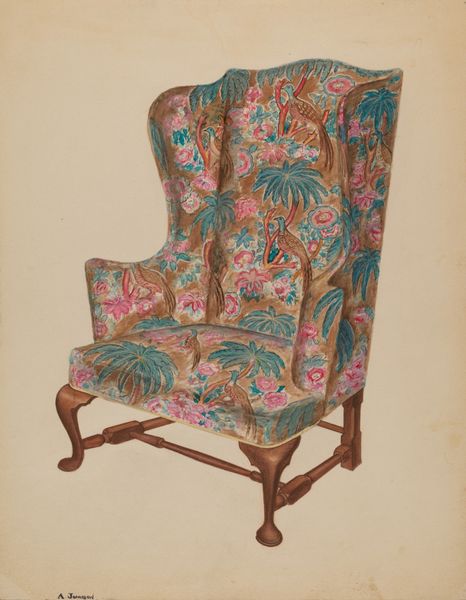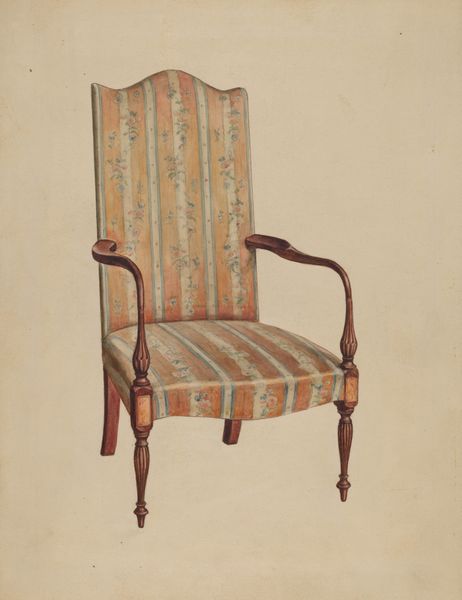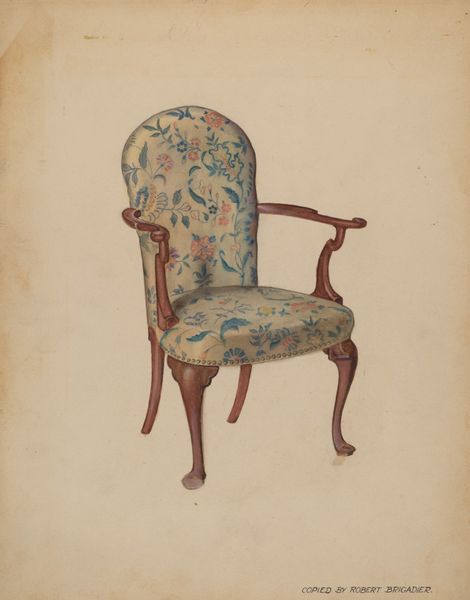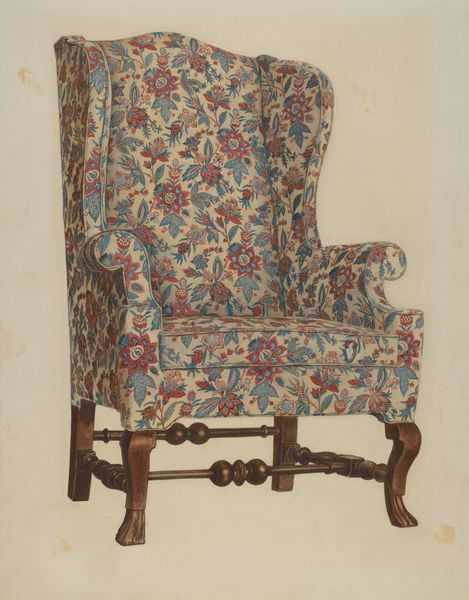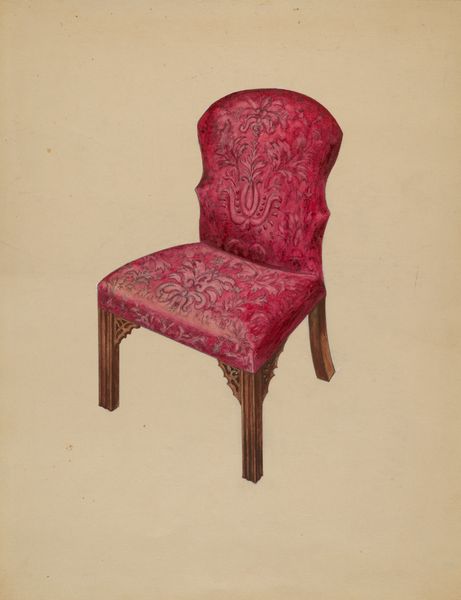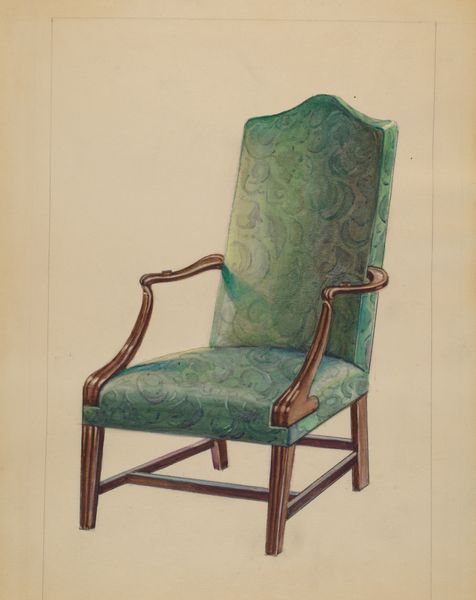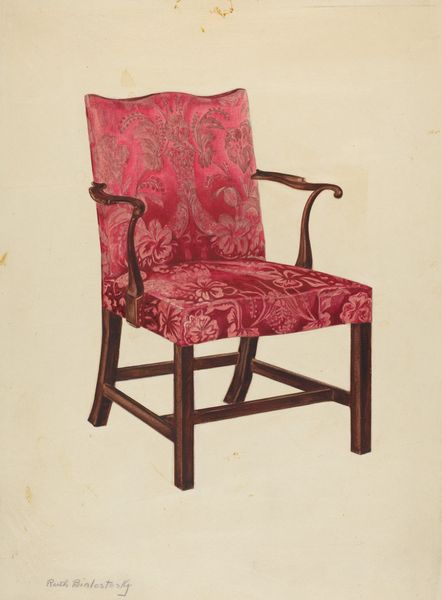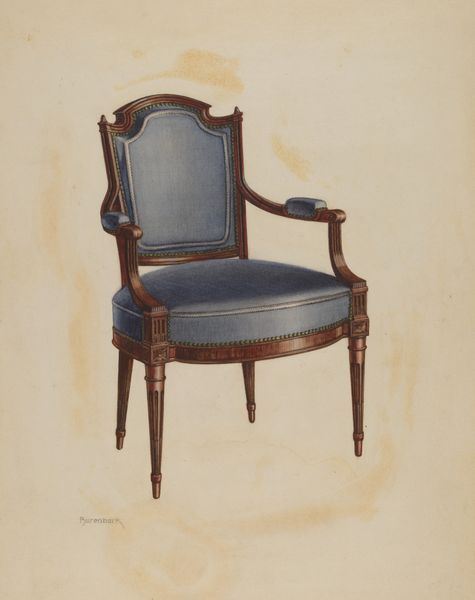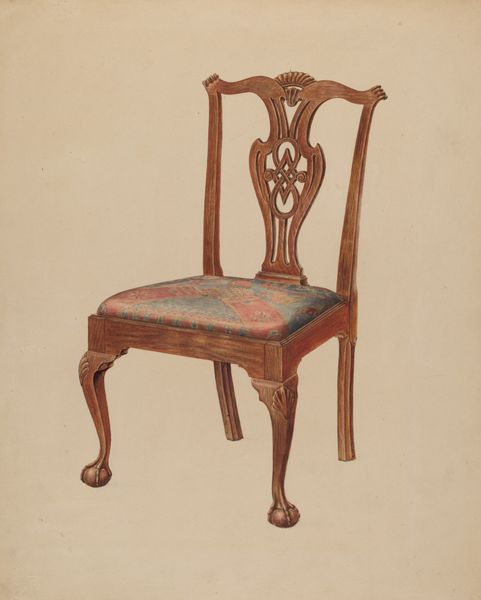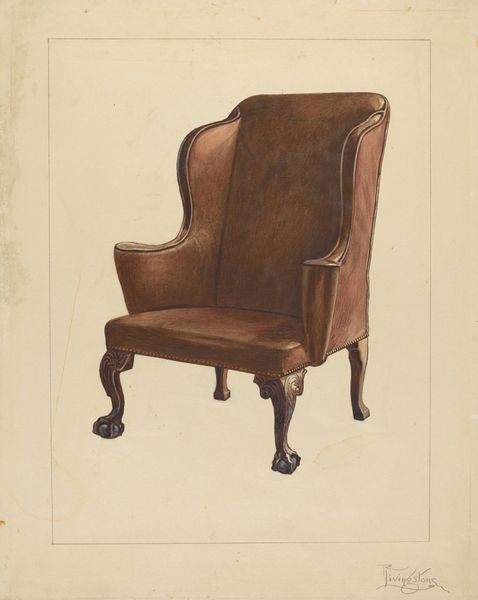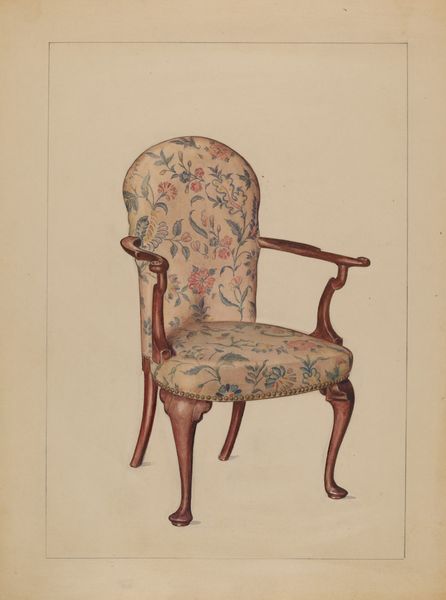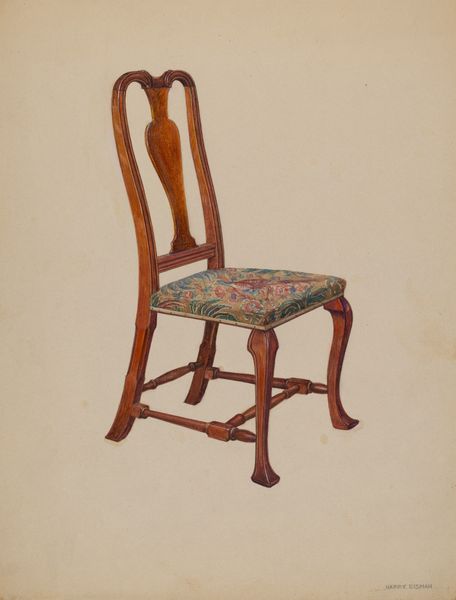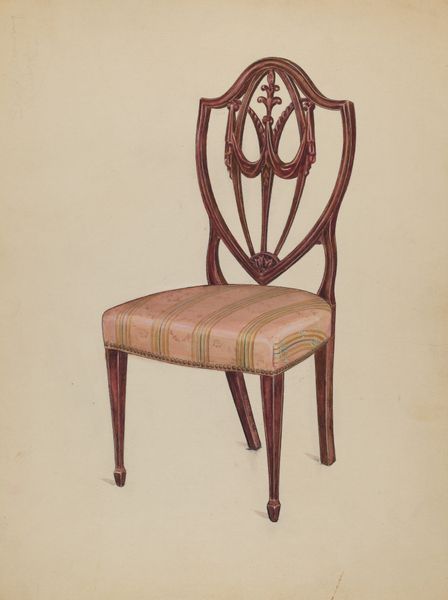
drawing, coloured-pencil, watercolor
#
drawing
#
coloured-pencil
#
water colours
#
watercolor
#
coloured pencil
Dimensions: overall: 30.3 x 22.8 cm (11 15/16 x 9 in.)
Copyright: National Gallery of Art: CC0 1.0
Editor: This is "Hepplewhite Arm Chair," a drawing from 1936, rendered with colored pencils and watercolors. The floral patterns combined with those stripes create such an unusual, yet pleasant, tension. What strikes you when you look at it? Curator: Immediately, I see a fascinating conversation around domesticity and design. Here we have an object, a chair, typically associated with comfort and the private sphere, yet its representation exists as a carefully constructed drawing. Who was this chair designed for? How does the visual language – the soft watercolors, the seemingly feminine floral pattern – reinforce or challenge traditional notions of gender roles and domestic space? Editor: That’s interesting. I hadn’t considered the gendered implications. Curator: And look closer. The drawing is from 1936. Consider the sociopolitical context: The Great Depression, rising fascism in Europe. How might this seemingly innocent chair be a subtle commentary on escapism or a yearning for a simpler, more comfortable existence, or an act of resistance through the celebration of beauty? It would be really revealing to investigate who Elizabeth Curtis was, and the type of work she generally produced. Editor: I suppose looking at it through that lens adds layers of complexity that I initially missed. Does the very act of meticulously rendering a domestic object elevate its status somehow, giving it new meaning? Curator: Exactly. It forces us to consider the power dynamics embedded in everyday objects and their representations. What is selected to be elevated to ‘art’ reflects particular agendas and privilege particular experiences, while often overlooking or silencing others. It really gets you thinking about it as something other than just a drawing of furniture! Editor: Absolutely! Thinking about art in relation to socio-political forces helps reveal so much more than initially meets the eye. Thank you for opening my eyes to these broader narratives.
Comments
No comments
Be the first to comment and join the conversation on the ultimate creative platform.
